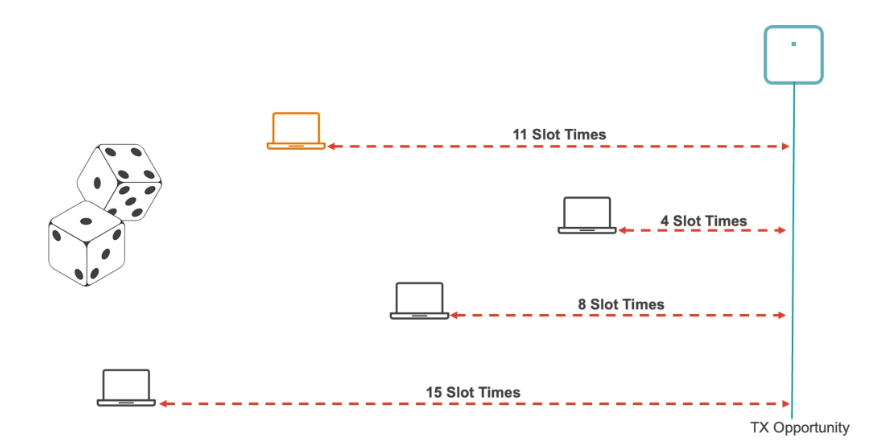EMAIL SUPPORT
dclessons@dclessons.comLOCATION
US802.11 Contention
Half-Duplex, Shared Medium
Wireless is a half-duplex, shared medium, so only one station can transmit in one direction at a time. This means that every time a client or access point (AP) seeks to send a packet, it must wait until no other device is sending a packet. The next slide describes the rules for sending a packet.

Distributed Coordination Function
Distributed Coordination Function (DCF) is a set of rules that determine when an 802.11 station can transmit. Also called the arbitration method, DCF uses carrier-sense multiple access with collision avoidance to prevent collisions using three rules:
- Listen before you talk — The station listens for 802.11 transmissions on the channel, as well as any noise on the channel. If the station decodes any 802.11 transmission or detects any noise with a signal strength above –62 dBm, the station defers their transmission. Because this occurs on the physical layer, this is called physical carrier sense. Besides detecting physical transmissions, each frame transmitted over Wi-Fi contains a duration field, which estimates how long the current device will be transmitting. The station will take this value and set its network allocation vector (NAV) and wait until this timer expires before continuing. This is called virtual carrier sense. A station must validate the physical carrier-sense and virtual carrier-sense before proceeding.
- Be quiet for a while — The station waits to transmit between frames for a minimum duration called the interframe spacing.
- Avoid collisions — Besides waiting for the duration of the interframe spacing, the station waits an additional, random amount of time. This is called the back-off timer. The time is a random value determined by the contention window. We discuss the details of the contention window on the following slide. If at any point the station detects transmission or noise above –62 dBm, it pauses the back-off timer and goes through rules 1 and 2 again before continuing.
The Contention Window
The contention window specifies the range of time slots a station must wait after the completion of the interframe spacing before it transmits. Each station randomly selects a time slot to use for its back-off timer and counts it down only when there are no transmissions detected. This means that the back-off timer will pause until the current transmission and the following interframe spacing have completed.
Because the selection is random, it is possible for a particular station to transmit multiple times before another station if it receives multiple low-value time slots. It is also possible for multiple stations to end up with the same time slot and therefore transmit at the same time. This is called a collision.
When a collision occurs, each station buffers the frame for retransmission, doubles the size of the contention window, and sets another back-off timer using the larger range to reduce the chance of another collision.

802.11 Reliable MAC
The 802.11 standard defines a method of detecting collisions called Reliable MAC (media access control). Every time a station receives a frame, it sends an acknowledgment that it has received the frame. When two stations transmit at the same time, their transmissions overlap and corrupt both frames.





LEAVE A COMMENT
Please login here to comment.